Delaware may not be large in land area, but it can boast a wide variety of bird life. One interesting group of birds to look out for, with more members than you may imagine, is ducks.
There are many ducks that you might see in this state, and below we have listed some of the most common, along with details on when you can encounter them in this area.
Mallard

- Anas platyrhynchos
- Length: 19.7 – 25.6 in (50 – 65 cm)
- Weight: 35.3 – 45.9 oz (1000 – 1300 g)
- Wingspan: 32.3 – 37.4 in (82 – 95 cm)
Mallards are common ducks that most people will find easy to recognize. You can spot these ducks in Delaware year-round. They appear on almost a quarter of the checklists submitted by birdwatchers in this state in both summer and winter.
American Black Ducks
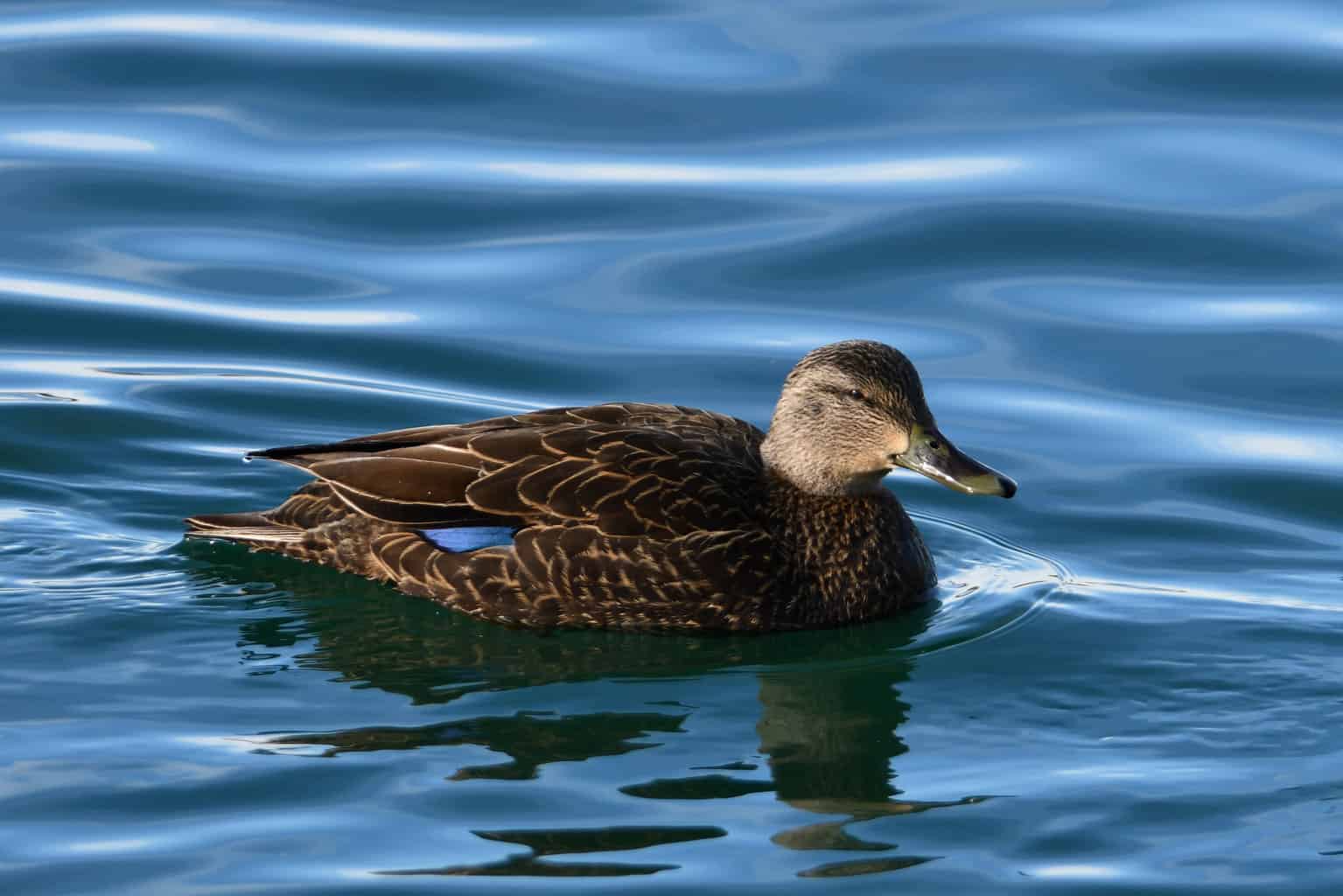
- Anas rubripes
- Length: 19 – 23 in (48 – 58 cm)
- Weight: 49.6 oz (1406 g)
- Wingspan: 33 – 36 in (84 – 91 cm)
American black ducks are most commonly seen in Delaware through the winter months. Though they can be seen here throughout the year, they are reported more commonly over the colder part of the year. They are recorded on 19% of birdwatchers’ checklists in this state during the winter, but only on 5% during the summer months.
Green-Winged Teal
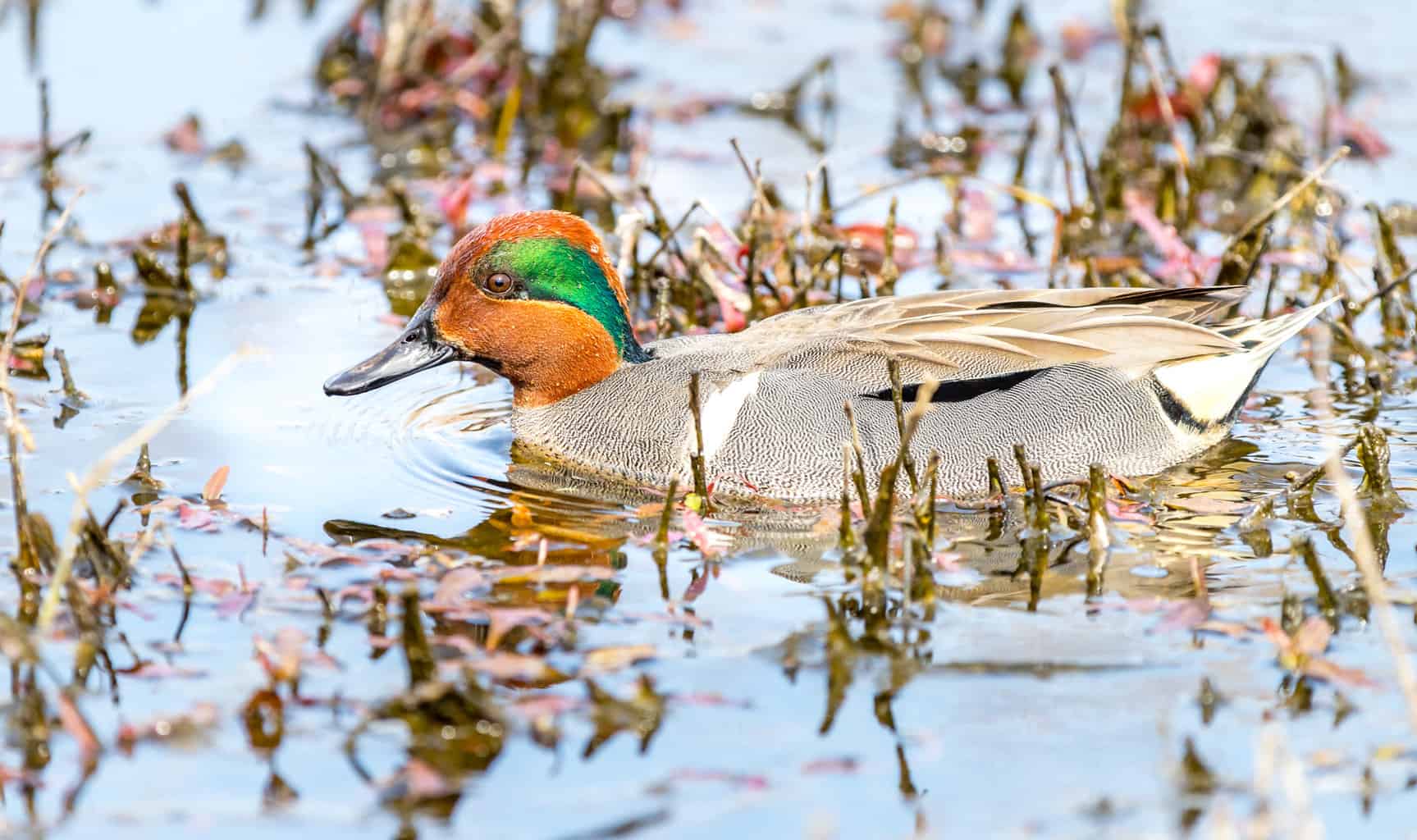
- Anas crecca
- Length: 12.2 – 15.3 in (31 – 39 cm)
- Weight: 4.9 – 17.6 oz (140 – 500 g)
- Wingspan: 20.5 – 23.2 in (52 – 59 cm)
Though these ducks can sometimes be spotted in Pennsylvania year-round, they are most commonly seen during migration when their numbers increase dramatically. You stand the best chance of seeing them during the spring migration period. 21% of birdwatchers’ checklists recorded green-winged teal on them during this time.
Northern Shovelers
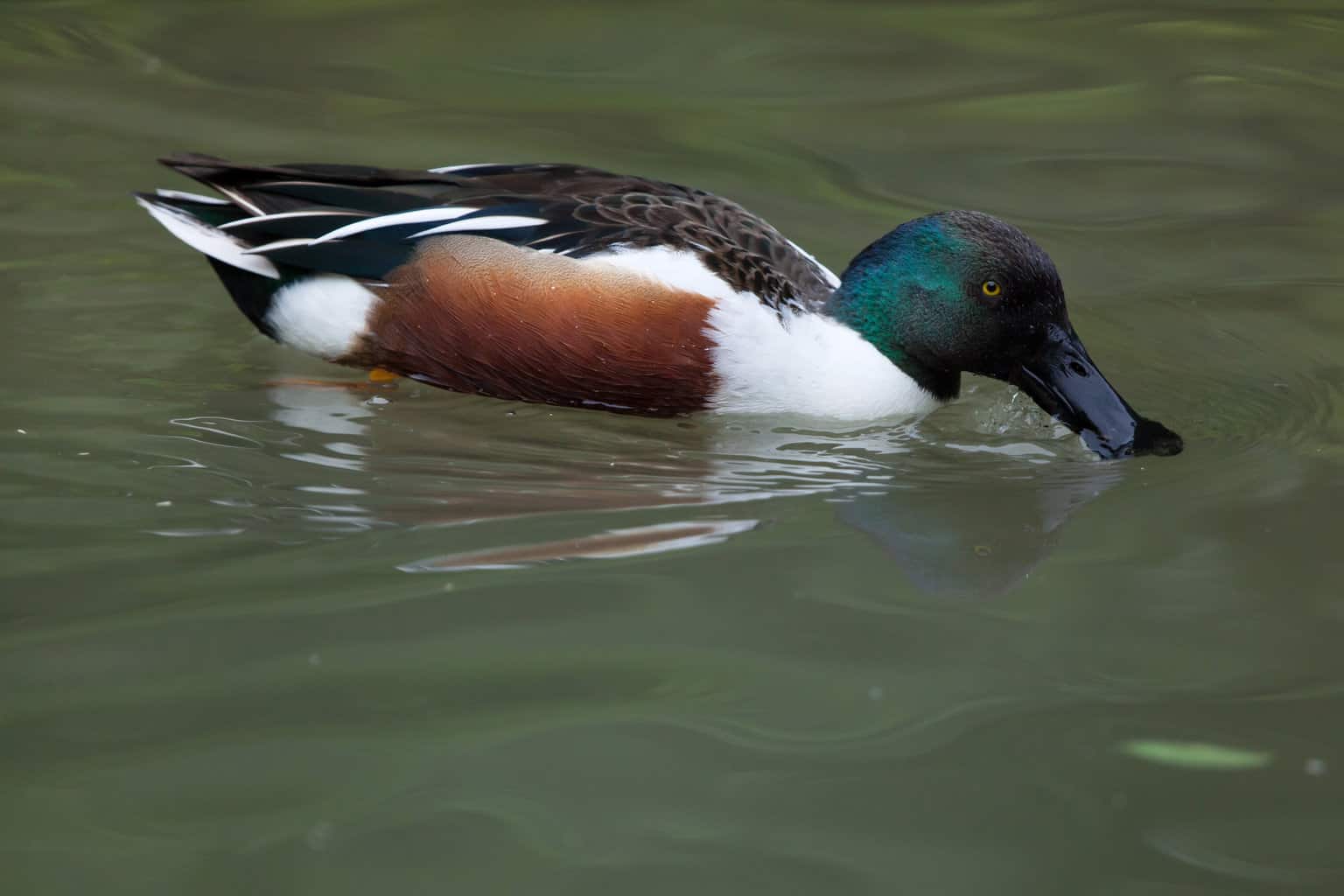
- Spatula clypeata
- Length: 17.3 – 20.1 in (44 – 51 cm)
- Weight: 14.1 – 28.9 oz (400 – 820 g)
- Wingspan: 27.2 – 33.1 in (69 – 84 cm)
These ducks are most commonly seen in Delaware over the winter months, after their arrival in October and before their departure in April. They appear in 9% of birdwatchers’ checklists during this time. However, they have been spotted in the state year-round. Look for them in sociable groups in shallow, stagnant waters.
Wood Ducks
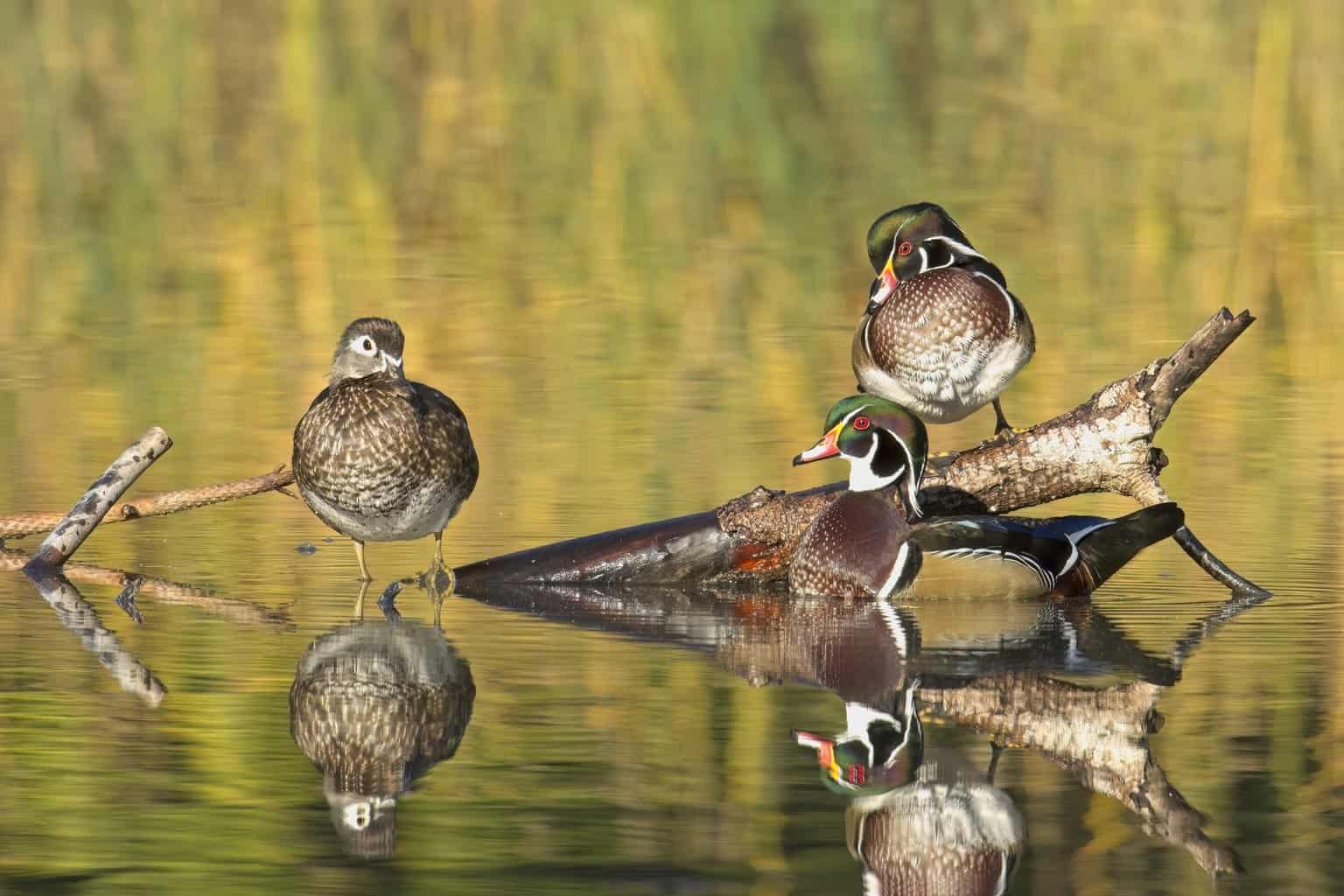
- Aix sponsa
- Length: 18.5 – 21.3 in (47 – 54 cm)
- Weight: 16.0 – 30.4 oz (454 – 862 g)
- Wingspan: 26.0 – 28.7 in (66 – 73 cm)
Another duck that can be present in Delaware year-round is the wood duck. But you are most likely to see them during the summer months when they are recorded in 8% of birdwatchers’ checklists in this state, rather than in winter when they are recorded in only 1% of checklists. You might see them in wooded swamps, but also feeding on land in fields and forests.
Northern Pintail
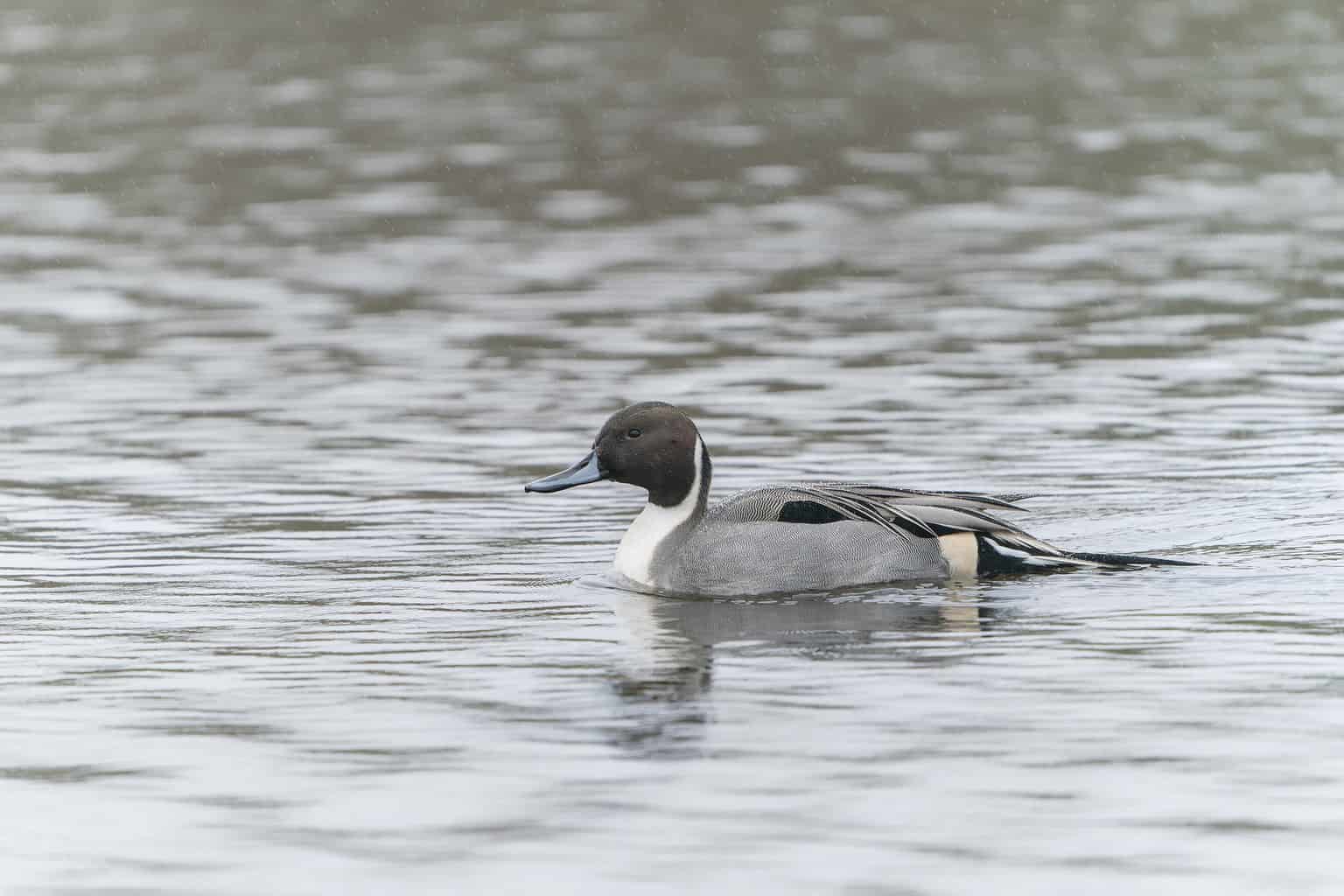
- Anas acuta
- Length: 20 – 26 in (51 – 66 cm)
- Weight: 36.33 oz (1030 g)
- Wingspan: 29 – 35 in (74 – 89 cm)
Delaware birdwatchers may spot northern pintails throughout the year. However, they are most commonly seen over the winter months, when they appear in 10% of birdwatchers’ checklists. You are most likely to see them between October and April, along the coastline and in areas of brackish marshland.
Gadwalls
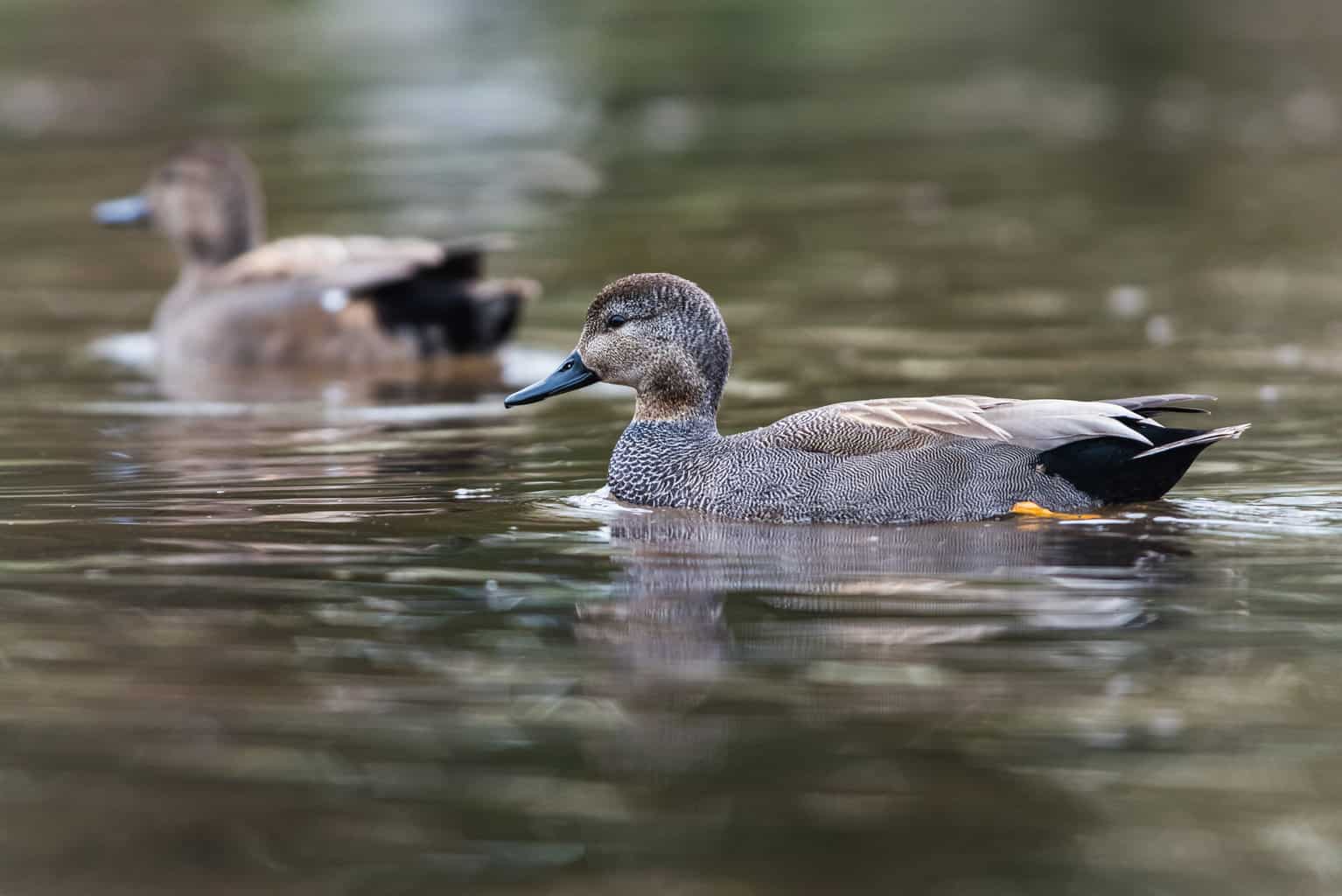
- Mareca strepera
- Length: 19 – 23 in (48 – 58 cm)
- Weight: 35.27 oz (1000 g)
- Wingspan: 31 – 36 in (79 – 91 cm)
Gadwalls appear on 6% of winter birdwatchers’ checklists in Pennsylvania. Some do remain here throughout the year, but most will arrive in November and remain until March. They can be seen in saltwater marshes, reservoirs, muddy estuaries, and even city parks.
American Wigeon

- Mareca americana
- Length: 16.5 – 23.2 in (42 – 59 cm)
- Weight: 19.1 – 46.9 oz (540 – 1330 g)
- Wingspan: 33.1 in (84 cm)
Look out for these ducks in Delaware over the winter months too. They appear in 3% of birdwatchers’ checklists at this time. You are most likely to see them between September and April, in wetlands and ponds, and fields nearby.
Blue-Winged Teal
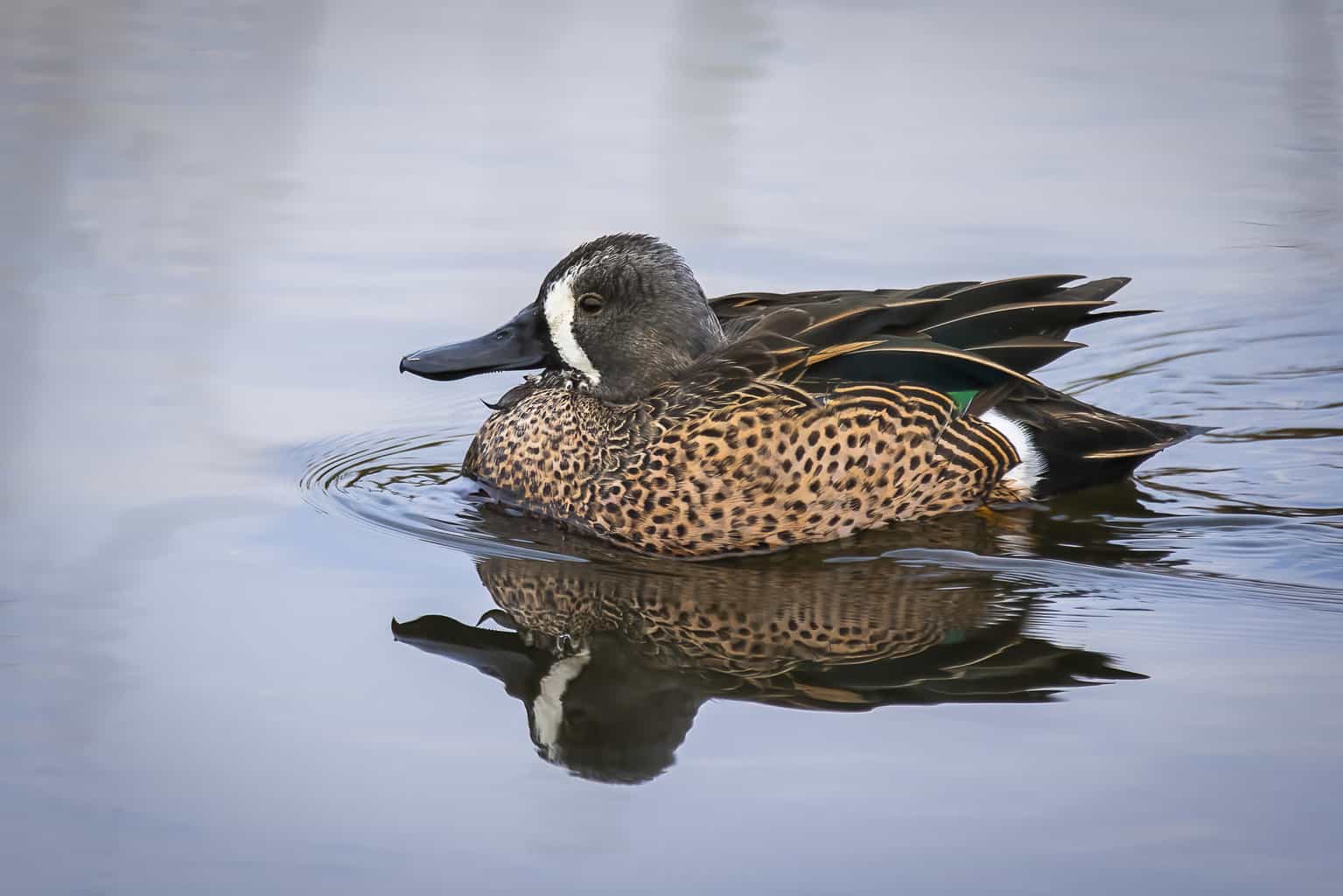
- Spatula discors
- Length: 15 – 17 in (38 – 43 cm)
- Weight: 19.18 oz (544 g)
- Wingspan: 23 – 31 in (58 – 79 cm)
The best time to spot blue-winged teal in Delaware is between March and May, and between August and November. These periods of migration are the times when numbers swell, and 5% of birdwatchers’ checklists in this state record seeing these ducks during these times. Look for them in and around shallow lakes and ponds with calm waters.
Buffleheads
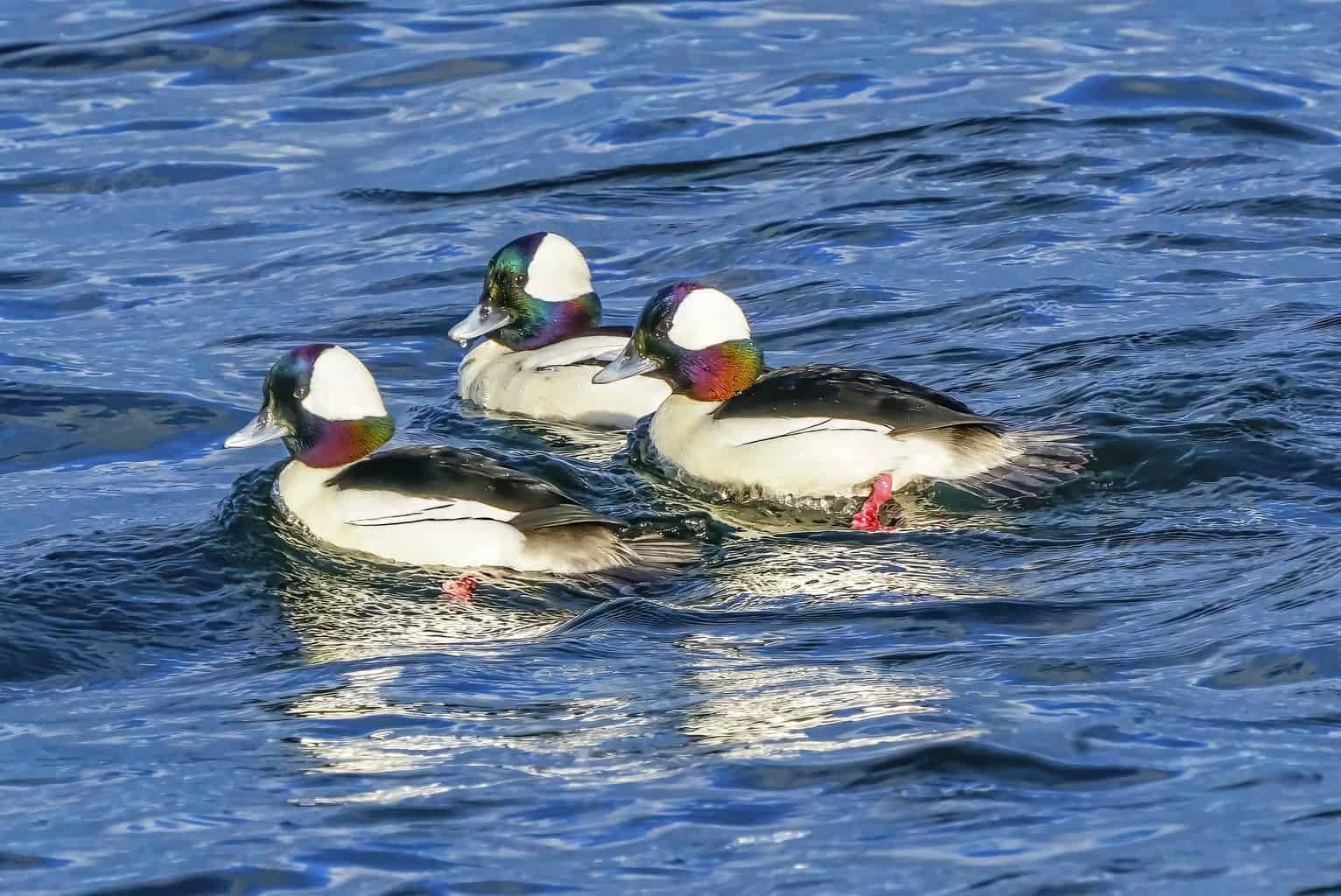
- Bucephala albeola
- Length: 13 – 16 in (33 – 41 cm)
- Weight: 21.16 oz (600 g)
- Wingspan: 20 – 24 in (51-61 cm)
One of the common diving ducks to look out for in Delaware is the bufflehead. These ducks are mostly spotted here in winter, between October and June. They are recorded in around a fifth of birdwatchers’ checklists at this time.
Ruddy Ducks
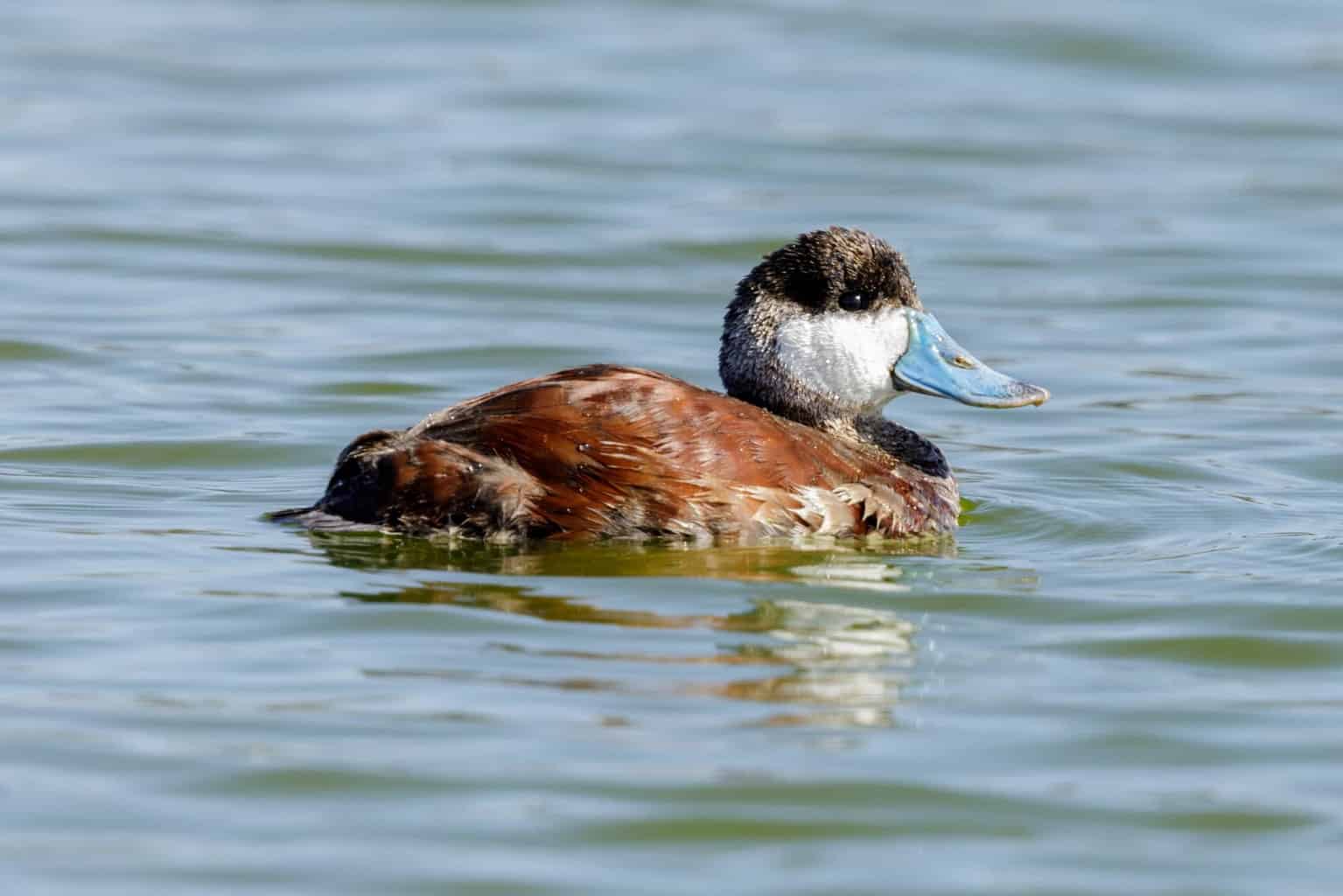
- Oxyura jamaicensis
- Length: 14 – 16 in (35.56 – 40.64 cm)
- Weight: 28.04 oz (795 g)
- Wingspan: 21 – 24 in (53 – 61 cm)
Though the ruddy duck can remain in Delaware year-round, they are most commonly seen over the winter months. They are typically present between October and March and over the winter, are usually spotted in shallow coastal waters as well as large ice-free lakes and ponds.
Ring-necked Ducks
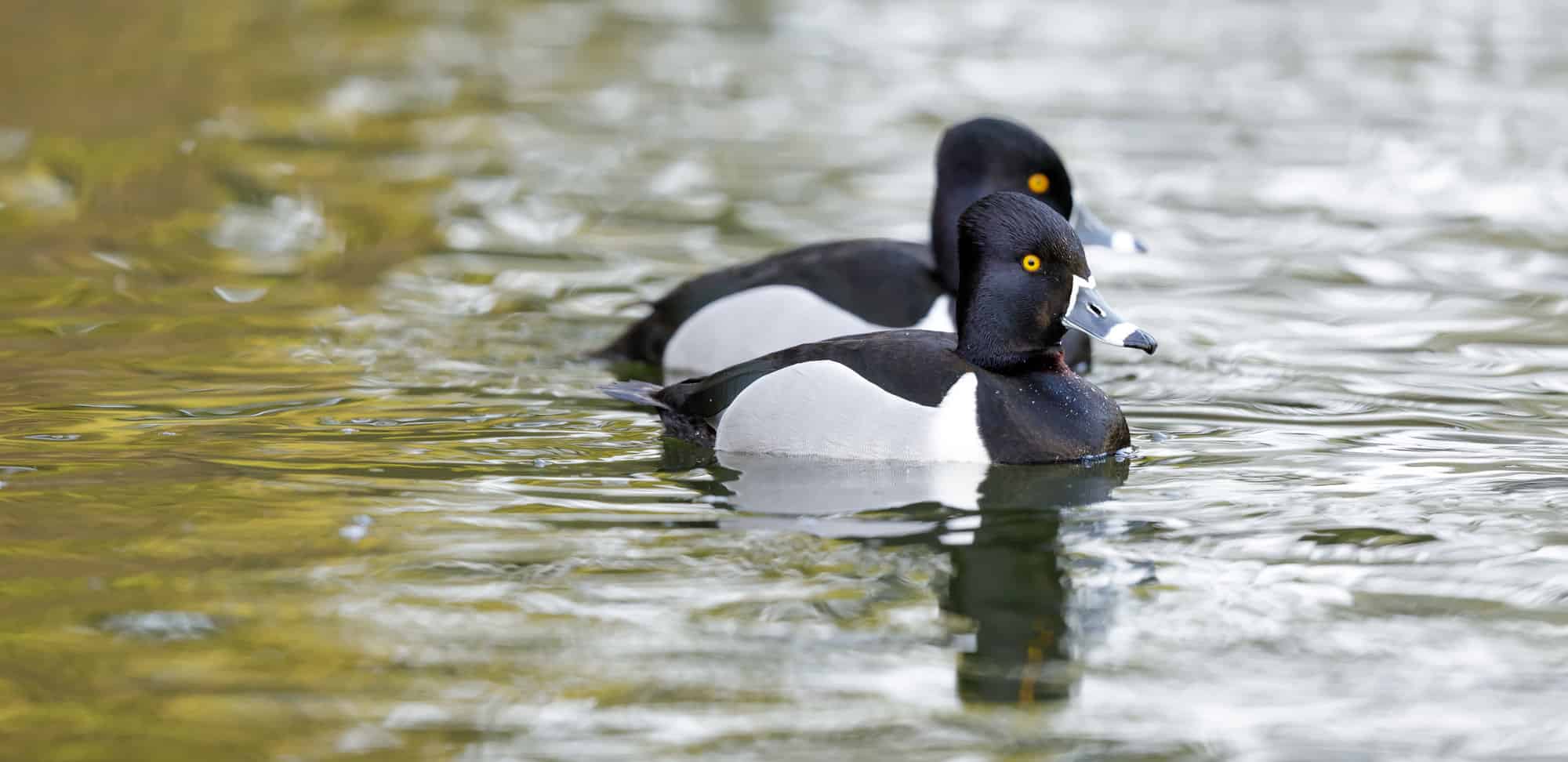
- Aythya collaris
- Length: 14 – 18 in (36 – 46 cm)
- Weight: 32.09 oz (909 g)
- Wingspan: 24 – 30 in (61 – 76 cm)
Occurring in 3% of the winter birdwatchers’ checklists in this state, ring-necked ducks are mostly spotted in Delaware between October and April. Look out for them in small and shallow ponds, and rivers.
Lesser Scaup
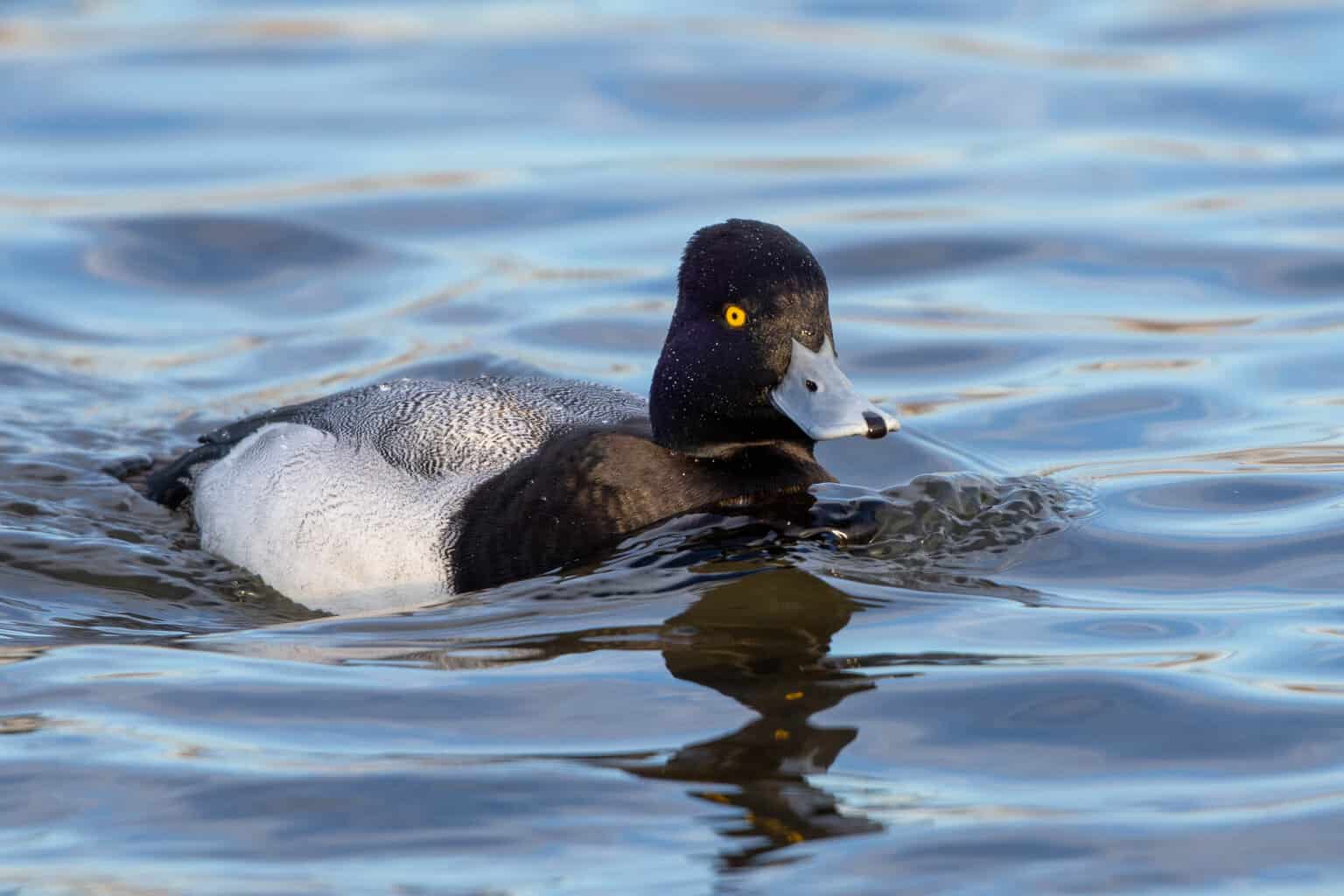
- Aythya affinis
- Length: 15 – 18 in (38 – 49 cm)
- Weight: 40.77 oz (1155 g)
- Wingspan: 24 – 33 in (61- 84 cm)
You can typically expect to see lesser scaup in Delaware between October and April. They appear in 1% of birdwatchers’ checklists from this state in winter. You can sometimes see thousands of these birds floating in coastal waters in the winter months.
Canvasbacks
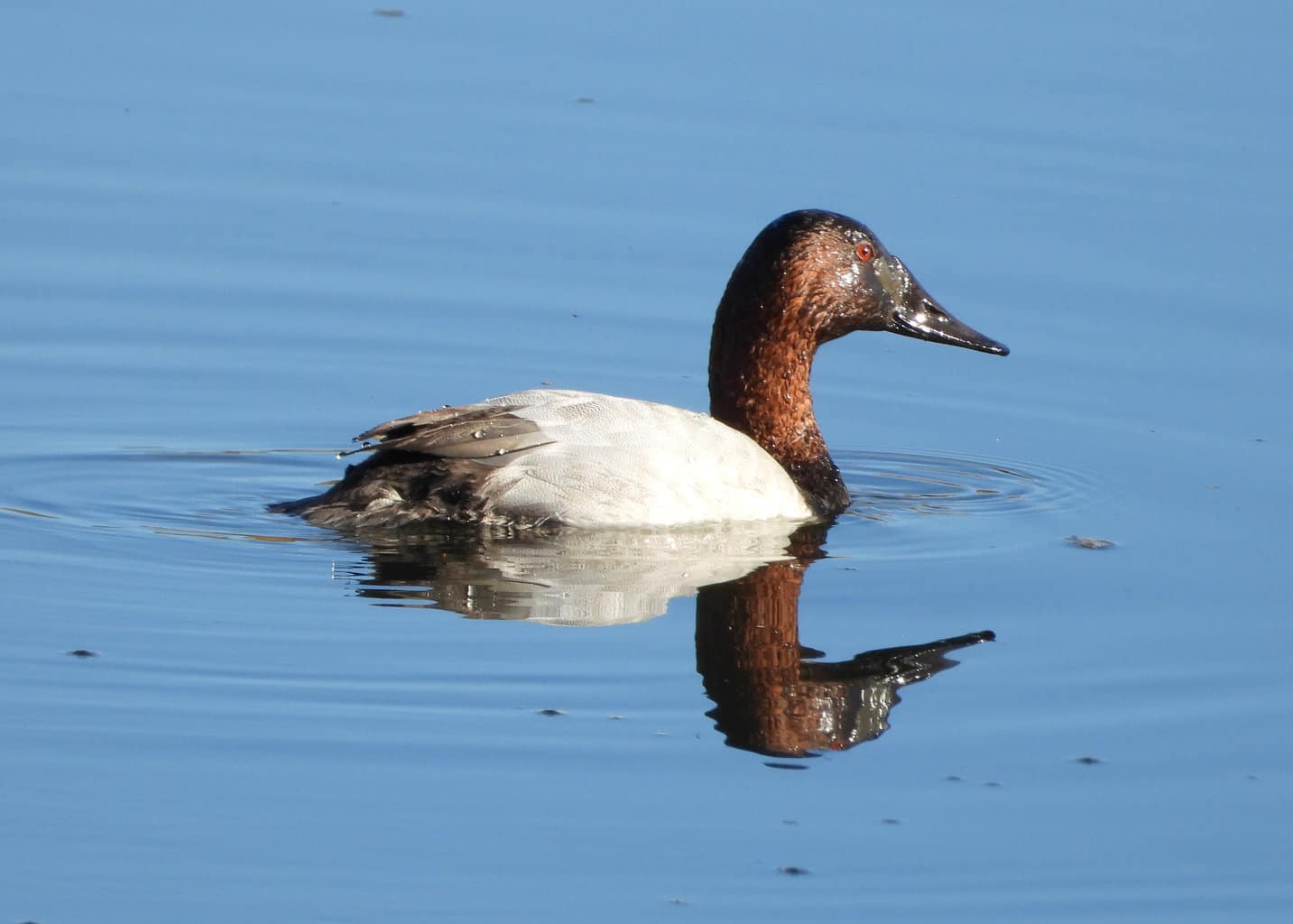
- Aythya valisineria
- Length: 19 – 24 in (48 – 61 cm)
- Weight: 58.48 oz (1657 g)
- Wingspan: 28 – 36 in (71 – 91 cm)
Canvasbacks are also commonly seen in Delaware in winter, between November and May, They appear on 2% of birdwatchers’ checklists in this state. Look out for them along the coast and in coastal waters, often in large flocks with other birds.
Greater Scaup
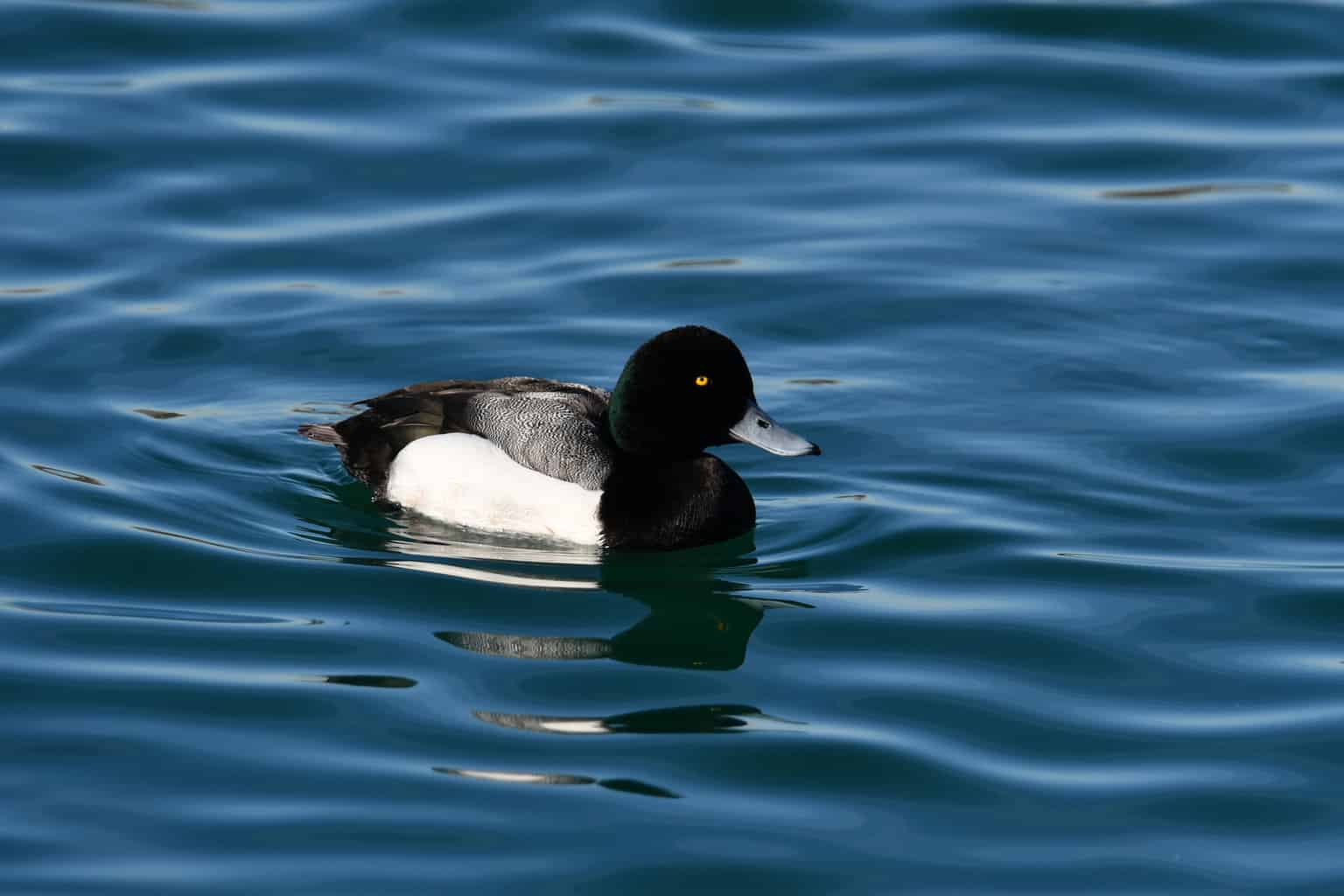
- Aythya marila
- Length: 15.3 – 22.1 in (39 – 56 cm)
- Weight: 25.6 – 48.0 oz (726 – 1360 g)
- Wingspan: 28.4 – 31.1 in (72 – 79 cm)
You can expect to see greater scaup in Delaware through the winter months too. They are recorded in 2% of winter birdwatchers’ checklists as well, and you are most likely to spot them in coastal waters between October and May.
Redheads
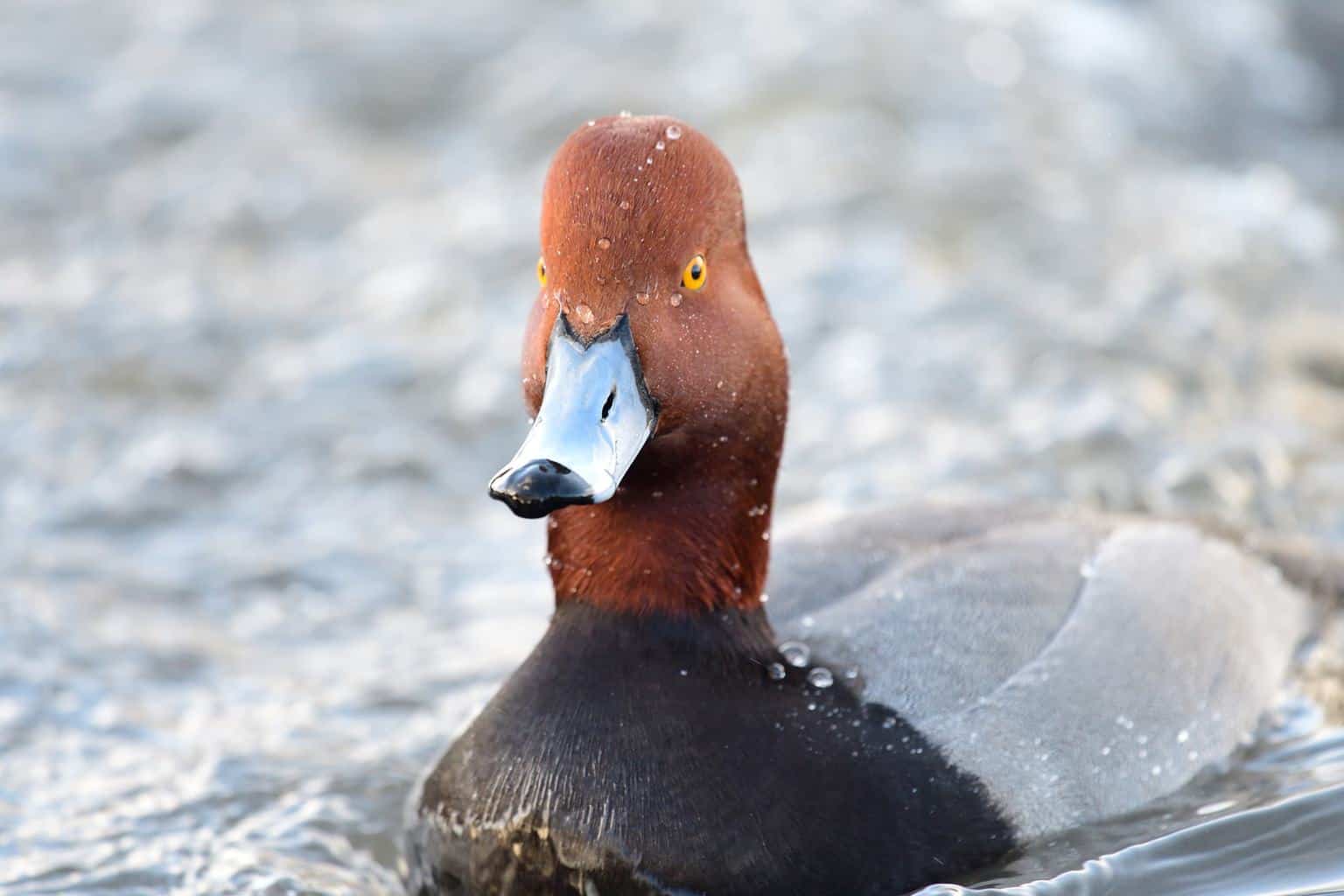
- Aythya americana
- Length: 18 – 22 in (46 – 56 cm)
- Weight: 43.03 oz (1219 g)
- Wingspan: 29 – 35 in (74 – 89 cm)
Though not especially common in Delaware, these ducks have been seen here between October and May. In winter, they are typically found along sheltered coastal shorelines or other calm waters.
Hooded Merganser
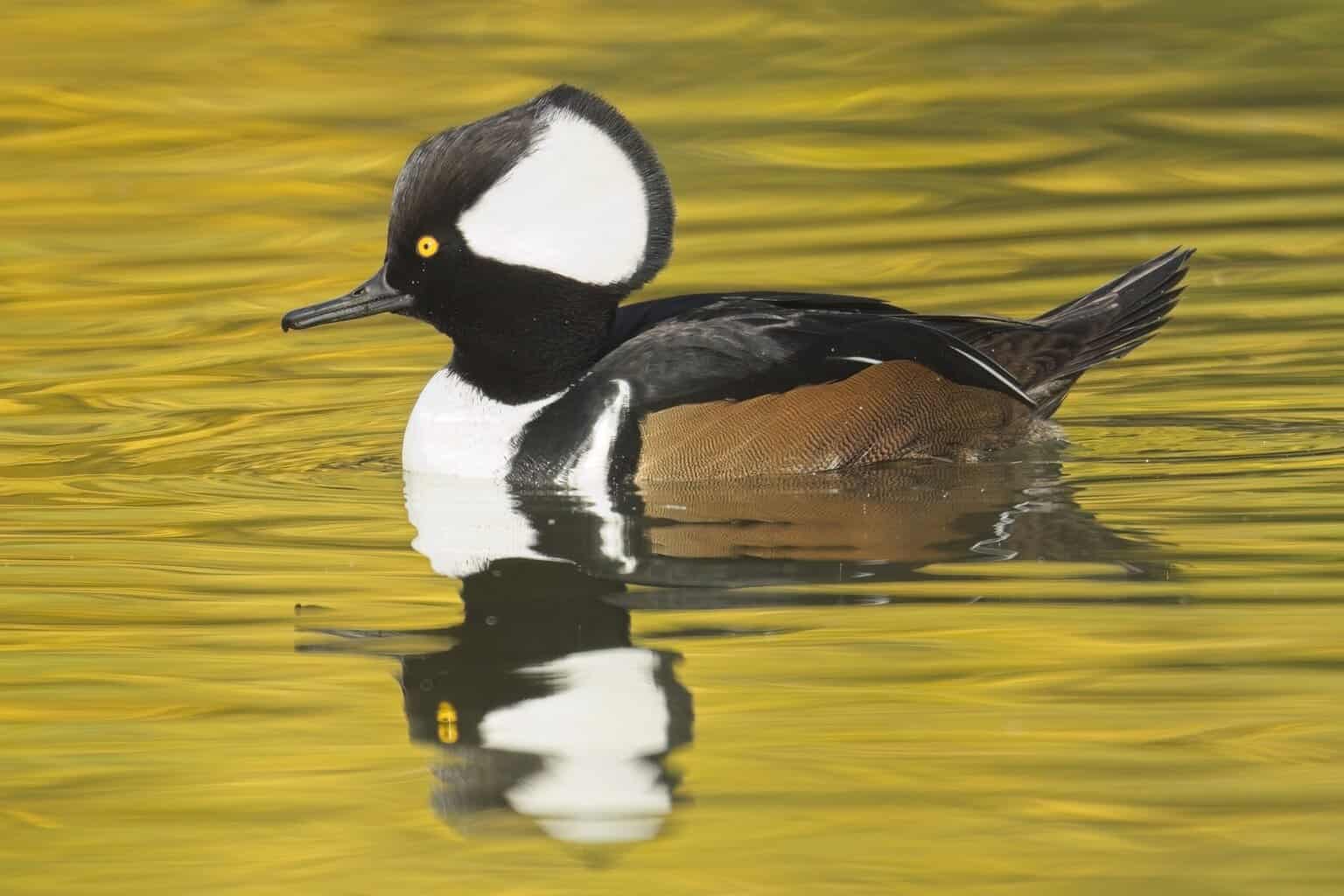
- Lophodytes cucullatus
- Length: 16 – 19 in (41 – 48 cm)
- Weight: 32.09 oz (909 g)
- Wingspan: 24 – 26 in (61 – 66 cm)
These sea ducks can be seen in Delaware during the winter. You are most likely to see them here between November and April when they appear in 9% of birdwatchers’ winter checklists in this state. Look for them in winter in saltwater bays and inlets.
Surf Scoters
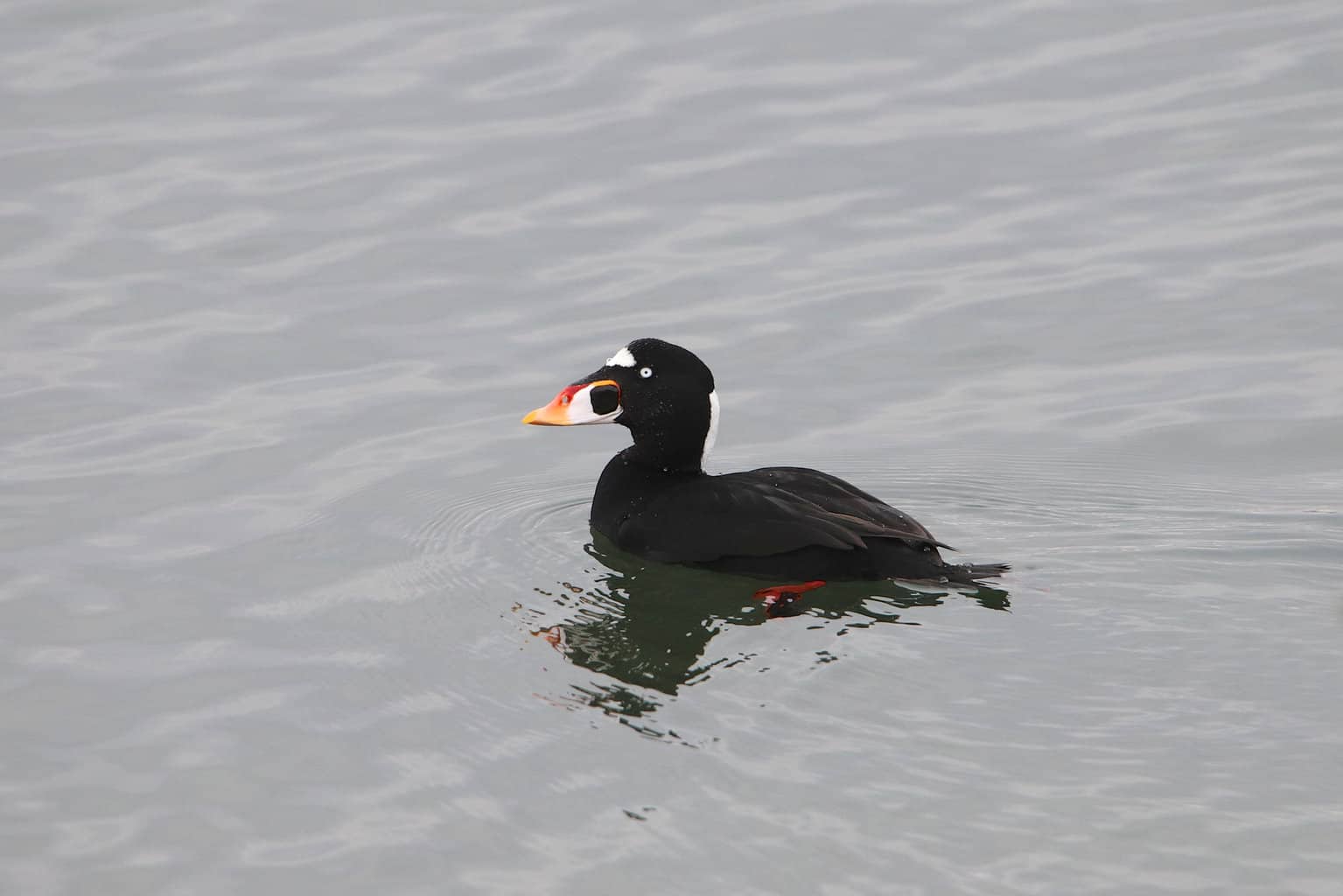
- Melanitta perspicillata
- Length: 17 – 21 in (43 – 53 cm)
- Weight: 35.27 oz (1000 g)
- Wingspan: 30 – 36 in (76 – 91 cm)
Another winter bird in Delaware, the surf scoter is typically present here and most frequently seen between October and April. These ducks are recorded in 7% of birdwatchers’ checklists during this time. Look out for them on shallow inlets and estuaries and out on the ocean.
Red-breasted Merganser
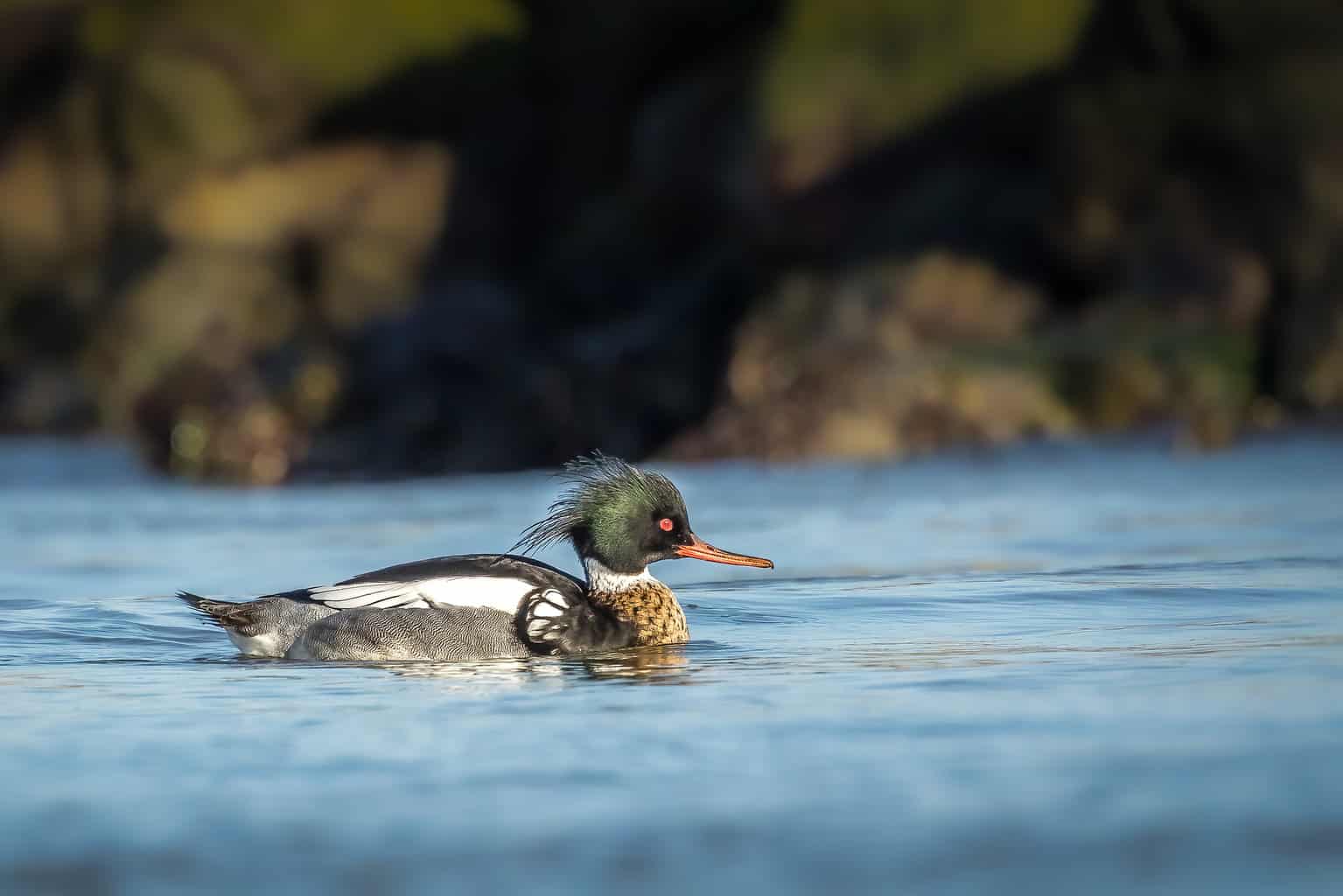
- Mergus serrator
- Length: 16 – 26 in (41 – 66 cm)
- Weight: 47.61 oz (1349 g)
- Wingspan: 31 – 35 in (79 – 89 cm)
Red-breasted merganser may stay in this state year-round. But they are most commonly seen in Delaware between October and May, on saltwater wetlands or the ocean.
Common Merganser
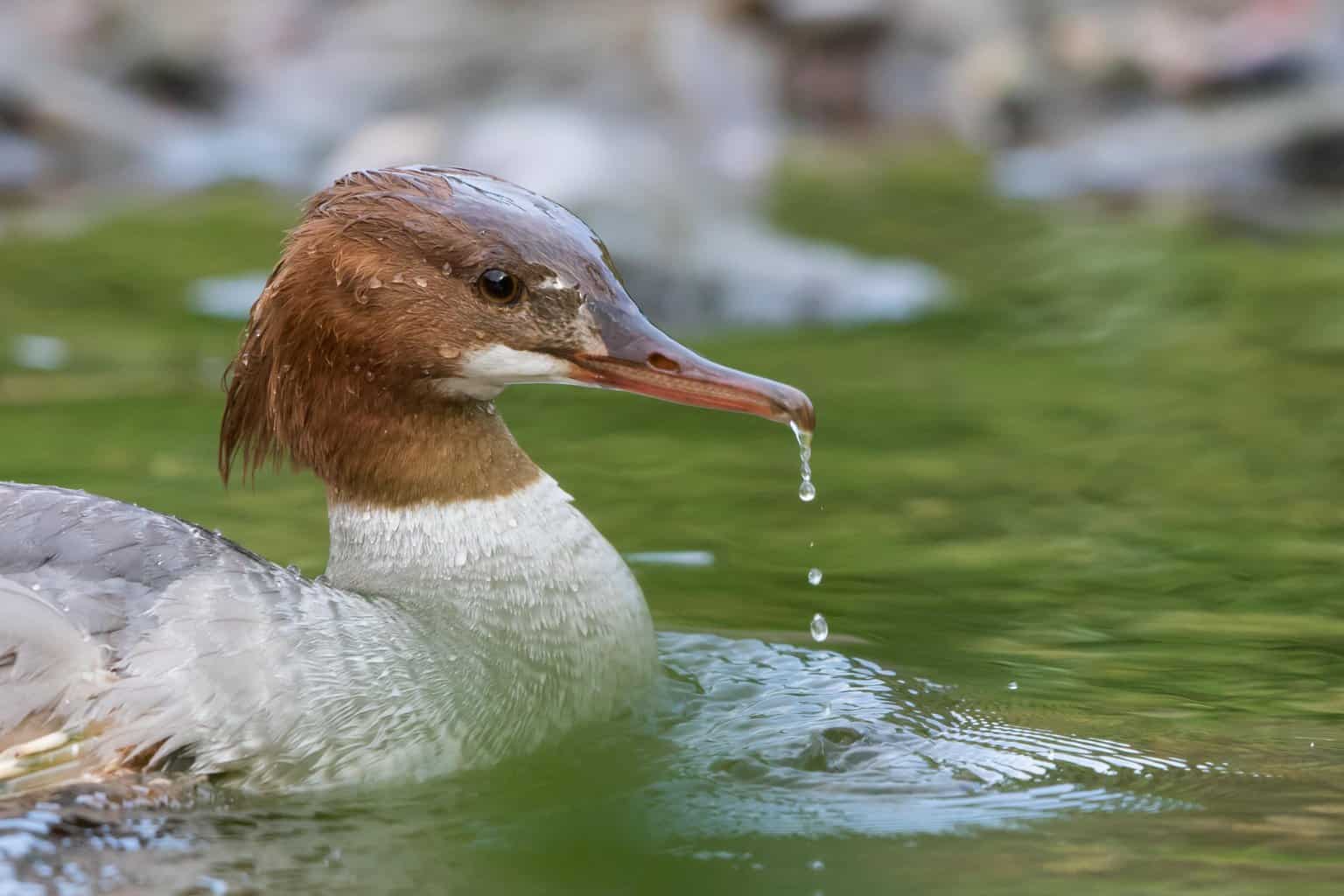
- Mergus merganser
- Length: 22 – 27 in (56 – 69 cm)
- Weight: 60.8 oz (1723 g)
- Wingspan: 31 – 37 in (79 – 94 cm)
These mergansers are also commonly spotted in Delaware in winter. They are typically present between November and May and are recorded in 5% of the winter birdwatchers’ checklists in this state.
These are not the only ducks that you might see in Delaware, in fact, there are several other ducks to look out for. But if you want to learn more about their presence in Delaware then the duck species listed above offer a great starting point.

